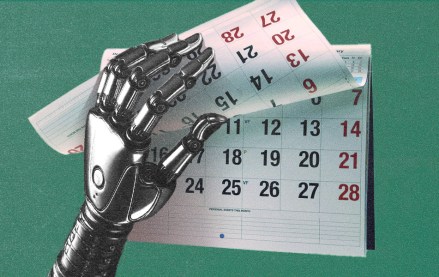Diageo’s cutting the number of publishers it works with to ensure quality
Two years after Diageo told media owners it plans to get stricter on who it buys ads from, the stance has left the advertisers with fewer publishers to buy them from.
Diageo’s reduction of long-tail publisher partners was intended to keep its ads in safe, exclusive environments where it has more control, in what it calls its “trusted marketplace.” The move aims to give Diageo a better understanding of the publishers it wants to buy from as it has never bought ads from a long list of sites. Reducing publishers isn’t the main goal of the marketplace.
The marketplace essentially codified protections for publishers, and it allowed Diageo to openly have conversations when publishers or platforms don’t perform to an agreed-upon standard, said Isabel Massey, global media director at Diageo. Campaign reporting is used to frame these discussions.
What Diageo is really doing with its marketplace is taking the first steps toward creating a central whitelist of relevant and effective sites by assessing the long tail of publishers it buys from. “Whilst we are working with fewer publishers overall, we have an ever-evolving open dialogue with more publishers than before,” said Massey.
Diageo hosts “media days” in several markets where commercial executives from publishers are invited to its offices to discuss their ability to meet 10 criteria. These include: strict measures on viewability by market; only people who are over legal drinking age should see its ads; viewability needs to be measured, using a variety of different technologies; and pricing models must be transparent.
Massey wouldn’t reveal how many publishers they had stopped buying ads from. But she added that after they were removed, the performance of Diageo’s ads didn’t suffer.
The number of fraudulent ads bought by the advertiser is “well below” industry benchmarks and whole viewability scores have improved over time as a result, added Massey. To put that in context, fraud rates sit at around 0.53% across Europe, per the Trustworthy Accountability Group, while viewability rates for desktop ads rose to 63.4% in the U.K. for the first half of 2018, per Integral Ad Science.
The fact that its ad performance hasn’t suffered has encouraged the advertiser to increase what it does spend with its fewer, selected media owners. In the first half of 2018, Diageo spent £60 million ($78.7 million) more than it did over the same period the year prior, for example. The savings to free up that cash came from all areas of Diageo’s marketing including media, experiential and in-store promotions, per its financial report.
“Our commitment to publishers was that we would invest with the most effective and responsible partners and work continuously to be more effective and more responsible,” said Massey. “We will pay the right price to achieve that outcome.”
The advertiser’s agencies remain responsible for enforcing the criteria, and Diageo has one core executive from its media agency Carat remain on site at its London headquarters.
“Our Trusted Marketplace approach should be co-owned with our agencies,” said Massey. “There is definitely more that advertisers and agencies could each be doing in this space, so it’s been critical to create a team which holds that tension with each other.”
Pruning a curated list of sites isn’t for the faint hearted when it comes to programmatic.
For the ads Diageo buys in the open market, it’s as simple as creating a whitelist of sites that are then pruned and monitored over time, whereas for private programmatic deals with publishers it’s a little trickier. The advertiser has to take the time to meet with publishers and then set up a network of deal IDs to create a network of private marketplaces to buy its programmatic ads from. These types of deals are increasingly more attractive to advertisers like Diageo, which are wary of buying ads in the open marketplace where they don’t have the expertise to avoid buys that could be fake, not seen or are a risk to the image of their brand.
“This has thrown up some challenges in some markets where scale is an issue and has led to us creating a third pillar to our approach, curating approved lists of publishers vetted against the Trusted Marketplace principles,” said Massey. “It’s a complex and important area and one where we’re constantly focused on further transparency and refining our approach.”
Checks and balances like Diageo’s marketplace are becoming table stakes for larger brand advertisers. Procter & Gamble, Unilever, Vodafone and Nestlé are among a flurry of advertisers that are shifting investment to publishers and platforms that guarantee effectiveness, keep their brands safe and more open to sharing their data.
“The number of advertisers curating their own media sellers has been growing for the last three years,” said Matt Green, global lead for media and digital at the World Federation of Advertisers. “The fraud issues in 2015, the rise of ad verification firms a year later, followed by the shift from blacklisting to whitelisting in 2017 has pushed advertisers further away from the long tail of dodgy domains.”
More in Media

Media Briefing: The top trends in the media industry for 2025
This week’s Media Briefing takes a look at the top trends from 2025, from digital advertising revenue performance to AI licensing deals.

Digiday Scorecard: Publishers rate Big Tech’s AI licensing deals
Digiday has compiled a scorecard grading AI platforms to make sense of the growing number of players in the AI content licensing market.

Publishers are hunting for AI prompt data — now they’re starting to get it from third-party companies
Publishers are finally gaining some visibility into AI search, as new prompt data tools crack open a black box.





